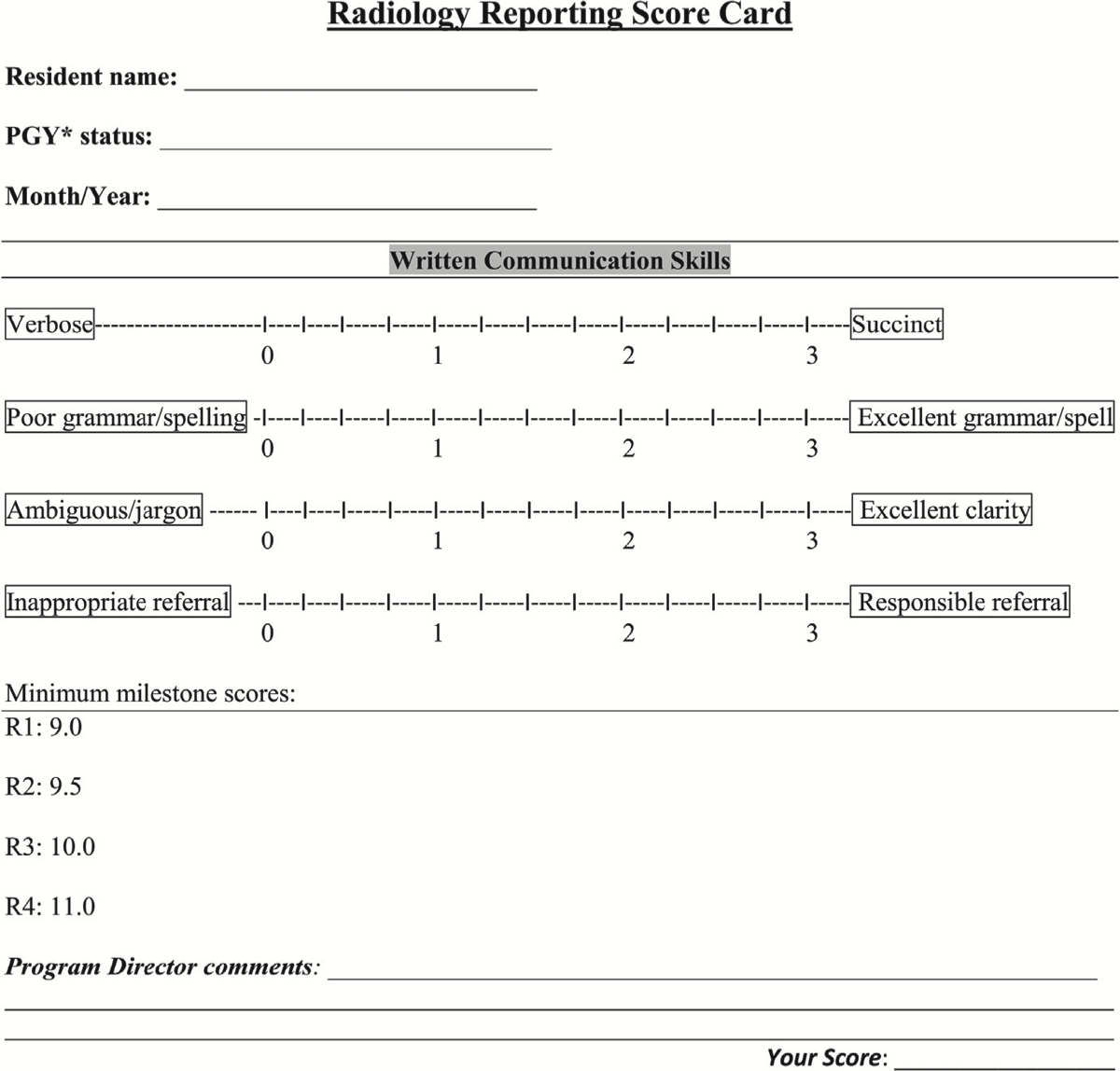DISCUSSION
The radiology report is often the primary means of communication between the radiologist and
the referring physician and is a formal medicolegal document. Fair or unfair, judgments of
clinical colleagues about radiology are increasingly made through our reports rather than through
personal interactions.
Guidelines for dictations:
- Use structured dictation format on all non-radiographic imaging studies (see templates below).
- Use complete sentences in the findings section and arrange the findings in the same order every time to avoid omissions.
- Present tense is preferred in reporting and is appropriate despite the fact that every examination or procedure is performed before the dictation.
- Avoid "There is" and "There are" in the dictation.
- Avoid the word “significant” in your dictations.
- Avoid the phrase "cannot be excluded." This usage is a grammatically undesirable double negative and is used inappropriately.
- Avoid using the word “appears.” It conveys more confidence to the clinician to say “is.”
- Avoid using the word “prominent.” This is a “classic hedge” and is overused.
- Avoid the term “bony.” Osseous is the preferred term.
- Consolidation or airspace opacity should be used instead of “infiltrate.”
- Always use the same unit of measurement throughout the report (preferably use centimeters rather than millimeters).
- When describing a mass or fluid collection, attempt to give measurements in all 3 dimensions (AP x ML x CC).
- For lesions that are not discretely measurable, define abnormalities as mild, moderate, severe or small, moderate, large.
- Avoid the terms "if clinically indicated" or "correlate clinically.”
- Impression should always address the clinical question. For example, if the requisition states "evaluate for acute appendicitis", then the impression should state whether acute appendicitis is or is not present.
- Items in the impression should be numbered in order of importance.
- Avoid repeating measurements and long descriptions in the impression.
- Differential diagnosis and recommendations should only be in the impression (not the findings).
- Indications should be included for every exam! Best to place in your templates.
- Comparisons should also be included for every exam. Best to place in your templates.
Suggested Words and Phrases to Avoid with Rationale for Avoidance
Vague or unclear jargon* that can be replaced with more descriptive anatomic terms
- Aspect
- Visible
- Non-specific
*Jargon definition: nonsensical, meaningless talk, vague meaning, or convoluted phrasing.
Vague or ambiguous terms used in place of the word ‘‘normal’’
- Negative (can mean bad or normal)
- Intact
- Maintained or well-maintained
- Preserved
- Unremarkable
Statements with no information that refer readers back to the body of the report or to prior reports
- Stating something is unchanged without describing its current appearance (e.g., lines are unchanged)—This is the
- same as saying ‘‘read the prior report’’
- As above in an impression—This is the same as saying ‘‘read my report’’
- Description of ‘‘stable finding’’ without further description as normal or abnormal
Vague reference to prior examinations without specifying the date of study
Vague description of study limitations or findings without explanation of importance
- Pulmonary vascular congestion without stating which vessels are involved
- Degenerative disease without further describing location or severity
- Vascular calcification without specifying location or severity
Phrases lengthening the report that can be omitted without changing the report meaning
- Appearance of
- Evidence of
Words and phrases that imply uncertainty, doubt, and insecurity without explanation
- Essential, essentially
- Relative, relatively
- Gross or grossly
Vague qualitative, judgment, or statistical words and phrases
- Quite
- Some
- Good
- Satisfactory
- Significant
Redundant or incorrect anatomical descriptions
- Bilateral lungs, orbits, or kidneys—This is redundant as these organs are always bilateral
- Lung fields—No such anatomy
Vague recommendations or lack of communication of recommendations
- Clinical correlation recommended
- Additional imaging recommended without explanation as to why
- Additional imaging recommended without documenting clinician communication
Repetitive use of phrase ‘‘There are’’ or ‘‘there is’’ at the beginning of all sentences


